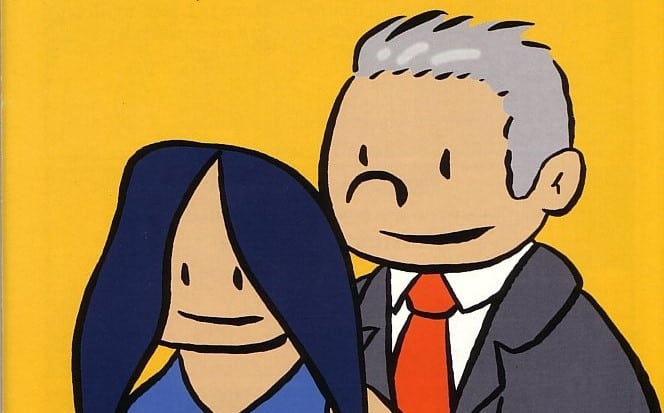Welcome to Throwback Thursday, where Comic Watch celebrates great comics from the past you might have forgotten about!
Monica’s Story
It’s almost quaint to think about now, but a sex scandal was once considered the very height of Presidential bad behavior. But as the ’90s closed, the administration of one William Jefferson Clinton, the United States Congress, the media, and the public at large were aghast and consumed by just one thing: Monica Lewinsky’s story.
Again, in light of the depredations of our previous Presidential administration, that there was a national uproar about Bill Clinton having an affair with an intern and lying about it under oath seems almost hilariously absurd in retrospect. But in those more (relatively) innocent times, that’s where America was. Special Prosecutor Ken Starr’s investigation into the matter (which had started, innocuously enough, as a look into a possibly corrupt land deal the Clintons had been a part of before they ascended to the White House) came to its conclusion in September 1998 when it was formally submitted to Congress for review. The report almost immediately became part of the public discourse, dragging a then-twenty-five years old Lewinsky’s personal life through the mud and permanently tarnishing the Clinton presidency. It was scandalous, sensational, muckraking America at its most lurid.
It was a story in which none of the players came out looking good in the end, which in a sense made it an almost Shakespearean gravitas. Except with sex cigars.
The inherent ludicrousness of the United States’ obsession with the President’s sex life, however, wasn’t the point of Monica’s Story, independently published by micro-publisher Alternative Comics in February 1999. The relationship itself was. Written anonymously (though later attributed to indie darling Jon Lewis) and illustrated by James Kochalka and Tom Hart, Monica’s Story actually adapts the Starr Report as a story, playing it straightforward as the doomed romance it was. Kolchaka’s deceptively simplistic art cuts right to the emotional heart of the matter, from their first furtive glances to the flirting to, ultimately, the torrid sex, cover-up, lies, and emotional abuse committed upon a starry-eyed intern by the most powerful man in the world. It’s important to note that while Clinton is definitely the gross villain of the story, Lewinsky herself was far from innocent, knowingly having an affair with a married man. For her, the secrecy was part of the allure.
Kochalka’s art is one of the keys to what makes Monica’s Story work. The indie auteur, perhaps best known for Monkeys vs. Robots, was able to strip the Starr Report down to its most crucial components, and along with Lewis’ adaptation, present an emotionally resonant tale of manipulation and desperation. Lewinsky, infatuated with her much-older lover, couldn’t see how badly she was being manipulated. Clinton, for his part, almost seems to believe the lies he tells Lewinsky (and himself), and to a degree maybe he did. Perhaps he was actually deluded that he could maintain their affair, and that he actually did love her and wasn’t just manipulating an intern twenty years his junior into giving him head. Perhaps, but probably not. Monica’s Story paints a gut-wrenchingly clear portrait of the manipulation and emotional abuse perpetrated on the young intern by the object of her affections.
Interestingly, all the proceeds from the sales of Monica’s Story went in support of the Comic Book Legal Defense Fund, more commonly referred to as the CBLDF, an organization that had, for whatever reason, vastly more omnipresence in the 1990s than it does today despite the fact that they’re still around and doing their important work. (Per their ad on the back of the comic, you could email them at Compuserve! If you’re old enough to remember Compuserve, you’re officially old.) The CBLDF’s mission was (is) legal representation for publishers, distributors, or retailers who were threatened, harassed, or litigated against in defiance of their First Amendment rights by would-be censors. They’re an important non-profit organization, currently crusading against book bans in light of the Maus uproar. However, there’s no clear tie between Alternative Comics, Monica’s Story, and the CBLDF to be found, either within the comic or in online searches. Regardless, the creators felt passionately enough about the CBLDF’s cause that they were willing to fork over all proceeds to their cause, which says quite a lot about their integrity and commitment to the cause of free speech. (If you’d like to donate to the CBLDF’s mission, please do so here.)
Ultimately, Monica’s Story is a time capsule to another era, a perhaps more innocent time in American history. When the worst thing the President could do was cheat on his wife, as opposed to, say, attempt to overthrow the democratic process via anarchic coup. It’s also a wonderful work of graphic comics art, albeit a largely forgotten one. Don’t let its art style fool you into thinking it’s reductive – if anything, it gets right to the heart of its story with utmost sincerity and grace.
